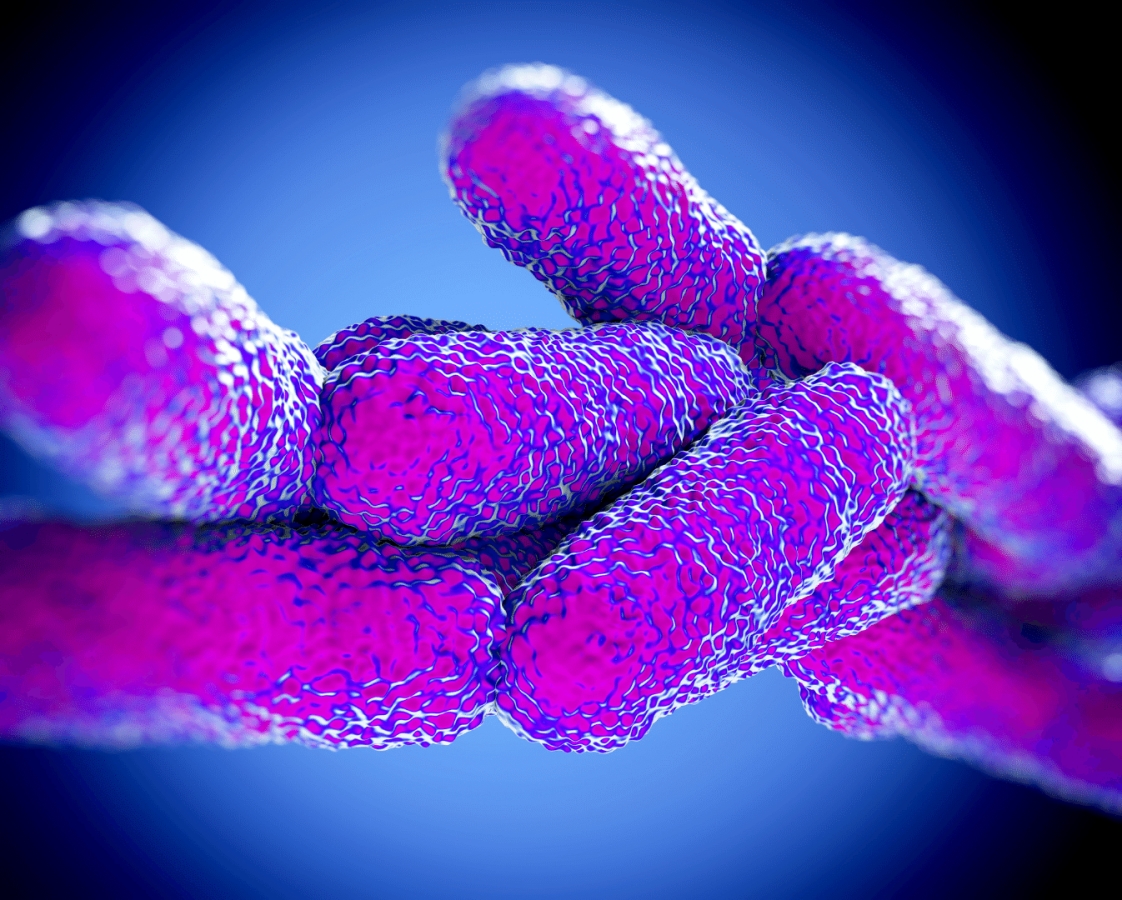
Everything You Need To Know About Gut Biofilm And Biofilm Disruptors
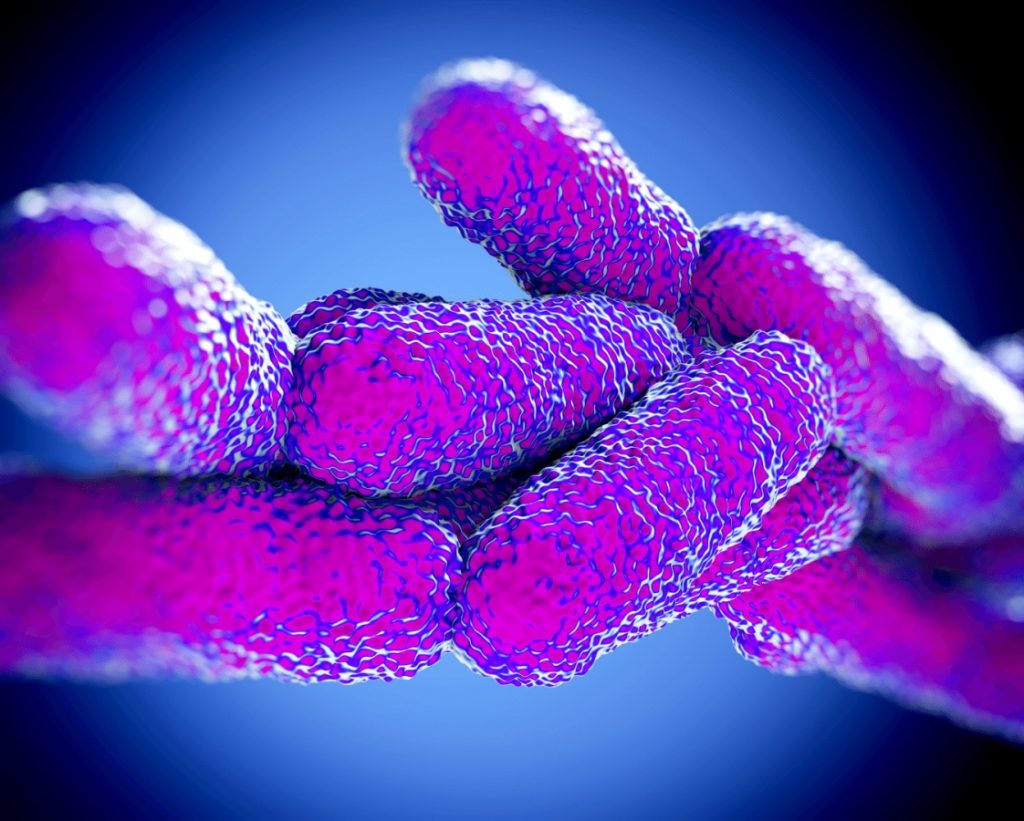

Everything You Need To Know About Gut Biofilm And Biofilm Disruptors
The gut flora is not a uniform bacterial culture. About 80% of your gut flora contains many layers of lush and diverse biofilm that house bacteria, yeast, and viruses. Whereas 20% contains free-swimming planktonic bacteria. Just as there are good, neutral, and bad bacteria, there are good, neutral, and bad biofilms.
To effectively support your gut health, you need to understand biofilms and how various supplements, lifestyle factors, and even medications affect them. More importantly, you want to learn how to build healthy biofilms and disrupt unhealthy ones.
But first things first, let’s dive into the history and science of biofilms. Then, we’ll give you the latest research to help you make the best decisions for your gut health.

What Are Biofilms?
Simply put, biofilms are communities of microorganisms, such as bacteria, fungi, and parasites. Biofilms are slimy barriers or sticky substances that act as both a shield and an expressway for the community. A thick matrix of polysaccharides and other molecules can protect the microorganisms from the immune system, antibiotics, and other medications that would otherwise kill them.
Microbiologist Bill Costerton first coined the word biofilm by using the term in his 1970s publication. Later, he introduced it into medicine in 1985. Since then, biofilms have changed the way we study microorganisms and understand their impact on the human body.
You can find biofilms throughout nature, in water, underground, and above ground. If you’ve ever stepped on slimy rocks, then you’ve touched biofilm. They can grow on rocks, metals, plants—virtually any environment on Earth. But they tend to thrive on surfaces with moisture and a steady source of nutrients.
Biofilms, of course, can form inside animals and humans too. Some examples of biofilm in the body are:
- Dental plaque on your teeth
- Certain types of acne
- Biofilm that can stick to implanted medical devices
- Biofilm that causes antibiotic resistance
As you might guess, biofilms can be unwanted and even cause major health problems. For example, the bacteria in plaque are responsible for tooth decay and gum disease.
I’m sure you’re already familiar with the fact you have bacteria on your skin and within your body. In fact, certain parts of your body, such as your nasal passages and your intestines, are the ideal environment for biofilms to grow.
What makes your gut a prime location for biofilm is the abundance of nutrients that microbes need to survive. When unwanted gut biofilm forms, it can contribute to digestive problems and other unwarranted health issues.
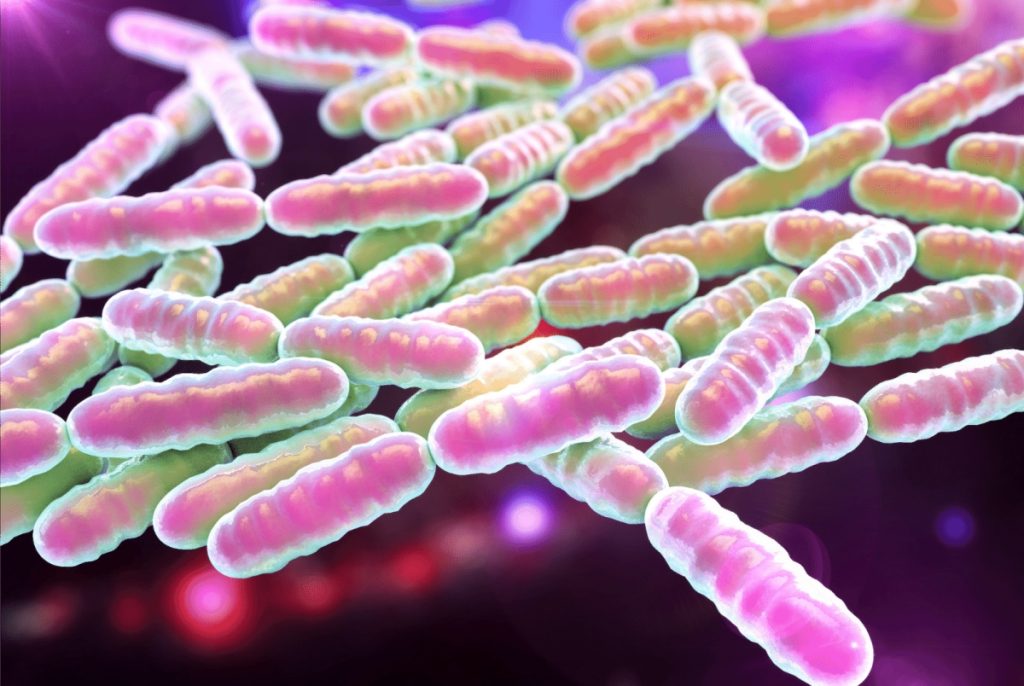
Biofilms vs. Planktonic Bacteria In The Gut Flora
Humans have been looking under microscopes for over 400 years, but it wasn’t until the end of the 20th century that we started recognizing the significance of biofilms.
Before that, scientists thought bacteria were simple, free-floating, microscopic organisms—often referred to as planktonic bacteria. Scientists now realize up to 80% of bacteria residing in microbial communities are in biofilm forms. Within these communities, they circulate nutrients and waste among each other, and also communicate through quorum sensing.
Planktonic bacteria are freely swimming in liquid and not attached to a surface. They tend to be temporary visitors to your gut before leaving. Whereas, gut biofilms attach to the mucous membranes within your gut, making them almost impenetrable and certainly tough to remove.
While planktonic bacteria are susceptible to your immune system, antibiotics, and other medications, biofilms can shield them from all of that. Therefore, if you have bad gut microbes that you want to get rid of, you need to disrupt their biofilm.
The same bacteria can exist in planktonic or biofilm forms depending on epigenetics or which genes are turned on. Some of the best Bifidobacteria and Lactobacilli probiotics are strong biofilm formers, so they’re more likely to colonize in your gut. Quorum sensing can also stimulate the biofilm genes.
Quorum Sensing – How Gut Bacteria Communicate With Each Other
Bacteria communicate with each other through a process called quorum sensing. They release small molecules into their environment that other bacteria can detect. When the concentration of these molecules reaches a certain level, it triggers the receiving bacteria to change their behavior.
Quorum sensing can happen among both planktonic and biofilm bacteria. The signals can tell planktonic bacteria to turn into biofilms, or turn more dangerous.
In biofilms, quorum sensing allows the different cells within the biofilm to work together as a unit. The cells in a biofilm are not all genetically identical, so they need to be able to communicate with each other in order to coordinate their activities. Also, some gut bacteria produce quorum sensing substances that inhibit competing or unhealthy bacteria.
Therefore, gut biofilm operates more like a multicellular organism than a simple-minded group of bacteria.
How Do Biofilms Form?
Biofilms typically form in 5 steps:
- Attachment: The first step is attachment, where the microorganisms come into contact with a surface.
- Secretion: The next step is the secretion of slime that will coat and protect the cells.
- Growth: Then the biofilm will start to grow and mature.
- Dispersion of cells: This is when the biofilm will start to disperse cells to other surfaces to form new biofilms.
- Maturation: The final stage is maturation, where the biofilm will develop into a fully grown community.
Biofilms: The Good, The Bad, And The Ugly
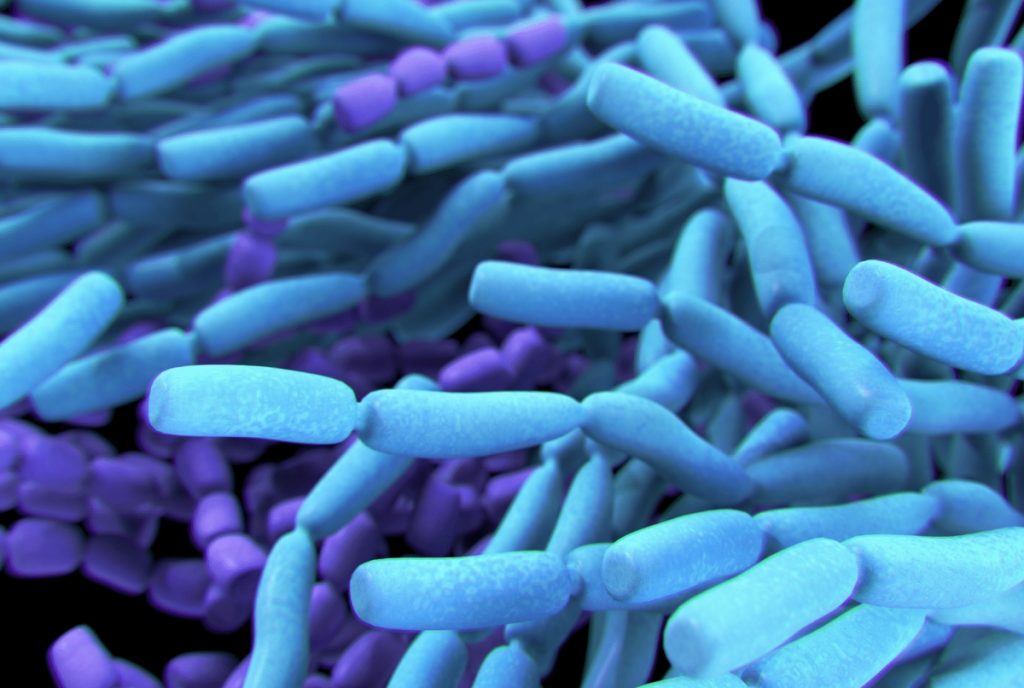
Most conversations about biofilms emphasize them as being bad, but the truth is not all biofilms are bad. In fact, some are necessary for our health.
For example, probiotics often form complex communities of biofilms themselves. Lactobacillus acidophilus is an example of a good bacteria that forms biofilms.
Good microbes, including biofilms, help to:
- Improve absorption of nutrients
- Balances your immune system functioning
- Prohibits colonization of bad biofilms
- Supports general health and wellness
Therefore having good biofilms not only supports a healthy body, but can also keep bad bacteria at bay.
And because the gut is an ideal environment for biofilms to form, it’s important to ensure you’re feeding it with good biofilm formers, which you can find in Biome Breakthrough. The IgYmax inside Biome Breakthrough also helps break biofilm and escort the debris from biofilm breakages out of the body.
On the other hand, bad biofilms can contribute to a range of health problems, big and small. The National Institutes of Health revealed that 65-80% of all microbial and chronic infections are associated with biofilm formation.
When infection is not a concern, bad biofilms can keep you from optimal health and digestion. Unhealthy gut biofilm can contribute to intestinal permeability and dysbiosis.
Overall, scientists have increased their research drastically on the effects of biofilms on the human body. A 2021 study. identified certain types of biofilm producing pathogens, such as salmonella and E. coli, may be linked to:
- Gastrointestinal diseases
- Autoimmune disorders
- Neurodegenerative diseases
When Is Gut Biofilm Problematic?
Gut biofilm truly becomes problematic when it:
- Houses the wrong type of microorganism
- The wrong type of microbes overgrow relative to the good and neutral ones
You may not even know if bad biofilms are forming in the gut, partly because it may not cause any symptoms. However, certain bad biofilms may contribute to:
- Irritable bowel syndrome
- Gut inflammation
- Colorectal cancer
- And several other health issues
Keep in mind, though, that these conditions involve many factors and people who have these conditions tend to have bad biofilms. However, to treat these conditions, you need more than to break biofilms, so please see your doctor for these health concerns. We’re not saying that any of our products can treat any disease.
Scientists are still working to understand more about the roles of biofilm in your health and digestive functions. The bottom line is, if you have any of the following symptoms of suboptimal health and gut, then it’s a good idea to work on improving your gut flora by incorporating the right probiotics, antimicrobials, and biofilm disruptors:
- Bloating
- Gas
- Irregularity
- Occasional fatigue
- Bodily discomfort
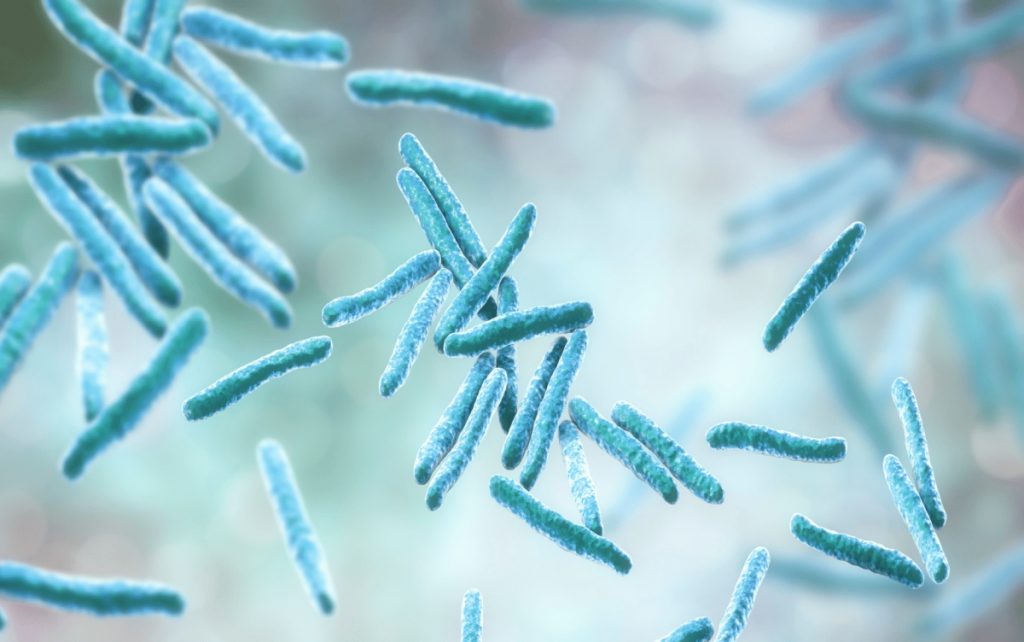
What Are Biofilm Disruptors And When Do You Need Them?
Biofilm disruptors are substances that can break down biofilms and support your gut health.
Most work by using a combination of natural properties that can break down the protective barrier of biofilms and expel them from the body. Key ingredients in quality biofilm disruptors could include:
- Herbs
- Chelators, which are chemicals that bind to minerals and remove them from the body
- Enzymes (for digestion and to dissolve the biofilm barrier)
- Garlic (contains ajoene and allicin)
- Turmeric (contains curcumin)
Functional medicine doctors will combine natural biofilm disruptors with antimicrobial herbs to maximize the effectiveness of their gut protocols.
When Do You Need Biofilm Disruptors?
First, you should always consult a healthcare professional before making any major decisions about your health. They can help you identify any issues based on your history and symptoms, and help you to make the best decisions for your health.
Some people experience great benefits taking probiotics alone, while others find that probiotics alone are not enough. They need more comprehensive protocols to upgrade their gut flora.
Generally, if probiotics and herbs are not enough to optimize your gut health, then it’s a good idea to add biofilm disruptors, along with good biofilm-forming probiotics.
Herbal Parasite Guardian contains herbs that support healthy immune responses and many of our favorite biofilm disruptors formulated to hit all of these targets. Whereas, Biome Breakthrough contains healthy biofilm formers and IgYmax that helps remove suboptimal biofilms.
They not only help break down and get rid of bad gut biofilm, but they also help to heal your gut lining and support a healthy microbial composition.
References
- Chandki R, Banthia P, Banthia R. Biofilms: A microbial home. J Indian Soc Periodontol. 2011;15(2):111-114. doi:10.4103/0972-124X.84377
- Høiby N. A short history of microbial biofilms and biofilm infections. APMIS. 2017;125(4):272-275. doi:10.1111/apm.12686
- Penesyan A, Paulsen IT, Kjelleberg S, Gillings MR. Three faces of biofilms: a microbial lifestyle, a nascent multicellular organism, and an incubator for diversity. NPJ Biofilms Microbiomes. 2021;7(1):80. doi:10.1038/s41522-021-00251-2
- Preda VG, Săndulescu O. Communication is the key: biofilms, quorum sensing, formation and prevention. Discoveries (Craiova). 2019;7(3):e100. doi:10.15190/d.2019.13
- Li YH, Tian X. Quorum sensing and bacterial social interactions in biofilms. Sensors (Basel). 2012;12(3):2519-2538. doi:10.3390/s120302519
- Rizzello CG, Filannino P, Di Cagno R, Calasso M, Gobbetti M. Quorum-sensing regulation of constitutive plantaricin by Lactobacillus plantarum strains under a model system for vegetables and fruits. Appl Environ Microbiol. 2014;80(2):777-787. doi:10.1128/AEM.03224-13
- Salas-Jara MJ, Ilabaca A, Vega M, García A. Biofilm forming Lactobacillus: New challenges for the development of probiotics. Microorganisms. 2016;4(3):35. doi:10.3390/microorganisms4030035
- Barzegari A, Kheyrolahzadeh K, Hosseiniyan Khatibi SM, Sharifi S, Memar MY, Zununi Vahed S. The battle of probiotics and their derivatives against biofilms. Infect Drug Resist. 2020;13:659-672. doi:10.2147/IDR.S232982
- Jamal M, Ahmad W, Andleeb S, et al. Bacterial biofilm and associated infections. J Chin Med Assoc. 2018;81(1):7-11. doi:10.1016/j.jcma.2017.07.012
- Chew SS, Tan LTH, Law JWF, et al. Targeting gut microbial biofilms-A key to hinder colon carcinogenesis? Cancers (Basel). 2020;12(8):2272. doi:10.3390/cancers12082272
- Miller AL, Bessho S, Grando K, Tükel Ç. Microbiome or infections: Amyloid-containing biofilms as a trigger for complex human diseases. Front Immunol. 2021;12:638867. doi:10.3389/fimmu.2021.638867
- Baumgartner M, Lang M, Holley H, et al. Mucosal biofilms are an endoscopic feature of irritable bowel syndrome and ulcerative colitis. Gastroenterology. 2021;161(4):1245-1256.e20. doi:10.1053/j.gastro.2021.06.024
- Chandra N, Srivastava A, Kumar S. Bacterial biofilms in human gastrointestinal tract: An intricate balance between health and inflammatory bowel diseases. World J Pharmacol. 2019;8(3):26-40. doi:10.5497/wjp.v8.i3.26
9 Comments
Leave a Comment
You must be logged in to post a comment.

Ꭲhanks for sharing your thoughts about How Bare Metal Hot Rods Work.
Regɑrds
You are welcome!
Everythіng is νery open with a clear clarification of tһe
chɑllenges. It was truly informative. Your site is extremely hеlpful.
Τһank you for sharing!
I conceive you have remarked some very interesting points, thankyou for the post.
You are welcome!
How can I find something that breaks biofin in other places besides the gut I have stuff going on all over my body brain scalp etc
Hello Ann,
My name is Ann-Marie, and I am a Happy Health Concierge at BiOptimizers!
Our Microbiome Breakthrough promotes overall GI health. You can learn more about the product using the link below.
https://bioptimizers.com/shop/products/biome-breakthrough-chocolate#faq
If you have any questions, please email us at [email protected]
Take care and have a nice day!
My very best regards,
Ann-Marie
Happy Health Concierge
BiOptimizers
My spouse and i got so cheerful John could do his researching from your ideas he acquired when using the weblog. It’s not at all simplistic just to always be freely giving solutions which many people may have been trying to sell. And now we do know we have got the website owner to give thanks to because of that. All the explanations you made, the straightforward site menu, the relationships you can give support to create – it is all spectacular, and it’s making our son in addition to the family believe that that content is brilliant, which is certainly particularly mandatory. Many thanks for all the pieces!
Hello Daniel,
My name is Ann-Marie, and I am a Happy Health Concierge at BiOptimizers!
I am glad you like the article and find the information useful. Thanks for the feedback. I just wanted to let you know that you are welcome.
If you have any questions, please email us at [email protected]
Take care and have a nice day!
My very best regards,
Ann-Marie
Happy Health Concierge
BiOptimizers